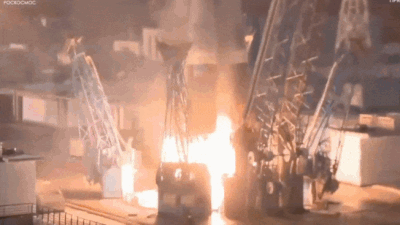
Russia’s space agency, Roscosmos, successfully launched a Soyuz rocket from the Vostochny Cosmodrome, carrying a dual mission payload. The rocket lifted two primary
Ionosfera-M satellites
aimed at monitoring space weather around Earth, while also deploying 53 smaller satellites, including two from Iran.
The Soyuz-2.1 spacecraft’s main payload, the Ionosfera-M satellites, each weighing 430 kg, will orbit 820 kilometers above Earth’s surface. These satellites will form a crucial part of a broader system designed to monitor the ionosphere—a region between 50 to 400 miles above the planet where Earth’s atmosphere meets space.
According to Nasa, understanding the ionosphere is vital for space weather forecasting, as this layer influences satellite operations and global communication systems. Roscosmos plans to expand this system to include four Ionosfera-M satellites, with the remaining two scheduled for launch in 2025.
Alongside the primary payload, Russia also launched a range of small satellites, including Iran's Kowsar and Hodhod. Kowsar, a high-resolution imaging satellite, and Hodhod, a communication satellite, mark Iran's first private sector launch of space technology. They join previous Iranian satellites launched by Russia, including the Khayyam Earth observation satellite in 2022 and the Pars-1 satellite earlier this year.
This launch underscores growing cooperation between Moscow and Tehran, as both nations expand ties across various domains. This comes as the Western nations and Ukraine accuse Iran of supplying Moscow with drones for use in the Ukraine conflict—a claim both governments deny.
Iran’s recent satellite launches with Russian support follow a series of setbacks within Iran’s civilian space program. In recent years, the country has faced multiple launch failures, including five consecutive failures with the Simorgh satellite program.
Accidents such as the 2019 launchpad fire that claimed the lives of three researchers have hindered Iran’s progress. Furthermore, in October, satellite imagery indicated that a retaliatory Israeli strike likely targeted a military facility used by the Iranian Revolutionary Guard’s space program.
The US intelligence community has flagged Iran’s satellite launch vehicle technology as a potential shortcut to developing intercontinental ballistic missiles (ICBMs), which can carry nuclear warheads.
Following the collapse of the 2015 nuclear deal, Tehran has enriched uranium to near-weapons-grade levels, a situation that the International Atomic Energy Agency (IAEA) has warned could enable the production of several nuclear weapons if Iran chose to proceed.

 2 weeks ago
8
2 weeks ago
8










 English (US) ·
English (US) ·